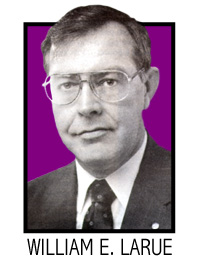 Labor's
big show -- 7 Days in June -- got upstaged last month and no one was happier about it than
labor. Sound odd? Guess again. Labor's
big show -- 7 Days in June -- got upstaged last month and no one was happier about it than
labor. Sound odd? Guess again. Building on the popular "Union Summer" program
that introduces college students to the labor movement by plugging them into organizing
campaigns, last year the AFL-CIO sponsored a day dedicated to drawing the public's
attention to the obstacles (most of which involve illegal employer activity) to workers'
right to choose a union. Summer -- traditionally a quiet time of pool parties and
barbecues -- presented the perfect opportunity to make a media splash.
The effort garnered so much attention that this year the AFL-CIO planned a week's worth
of activities to explain to the public why more working people are trying to join unions
than at any time in recent history and how employers are blocking their freedom to do so.
Rallies, press conferences, vigils, community forums, testimony before state
legislative committees -- all were slated to be held in a marathon of pro-organizing
educational efforts across the country. The events went on, and were well received. But
they were reduced to almost background noise by the American Medical Association's
announcement that it was taking an active role to help its members form a new union for
doctors. The news struck like a thunderbolt in the popular press.
After all, doctors are revered in American society. They are independent, wealthy,
highly educated -- what do they need a union for? Of course, within the labor movement,
the news wasn't that shocking. Different unions have represented doctors, nurses and
others in the medical profession for years. Moreover, in recent times, organizing among
these professionals has vastly increased -- in fact, the doctors, like other workers, are
themselves approaching unions about becoming union members.
The reason, of course, is managed care. In today's world, doctors are employees just
like the rest of us, being pushed to be more productive, cut corners, cap wages and
benefits -- the same old story. It just doesn't fit into America's mythology for its MDs.
The contrast is even more striking because this surge to join a union among
professionals comes as the United States enjoys unparalleled economic prosperity --
another of the popular media's myths. As we know too well, the rising tide is doing
nothing to close the income gap, and everything to help widen it.
In fact, more and more workers are flocking to unions even as unemployment levels fall.
Just look at real wages for the reason why. For the first time in modern economic history,
a tight labor market has not translated into any significant rise in wages. That low
inflation factor is another word for stagnant wages. No one wants to see out-of-control
inflation, but there must be some balance -- and some reward -- for America's workers and
their rising productivity levels.
Last year, the number of elections conducted by the National Labor Relations Board
increased from 3,160 to 3,229. And that doesn't even take into account some of the larger
organizing wins which took place under the National Railway Labor Act. The BMWE, as you
know, can proudly add its own modest, but successful, numbers to the pile. In 1998, for
the first time in years, union membership actually rose -- by more than 100,000. A
significant accomplishment when you consider that most employers are fighting organizing
efforts tooth and nail.
That's the reason behind the 7 Days in June. To get the story -- the workers' desire
and need for a union and employers' opposition -- out in the open. We in labor know the
story. The public and the media do not. If it takes doctors admitting their own workplace
aches and pains to get our story out there, it's a prescription we'll gladly take. |

